Презентація на тему «Theory of decision-making»
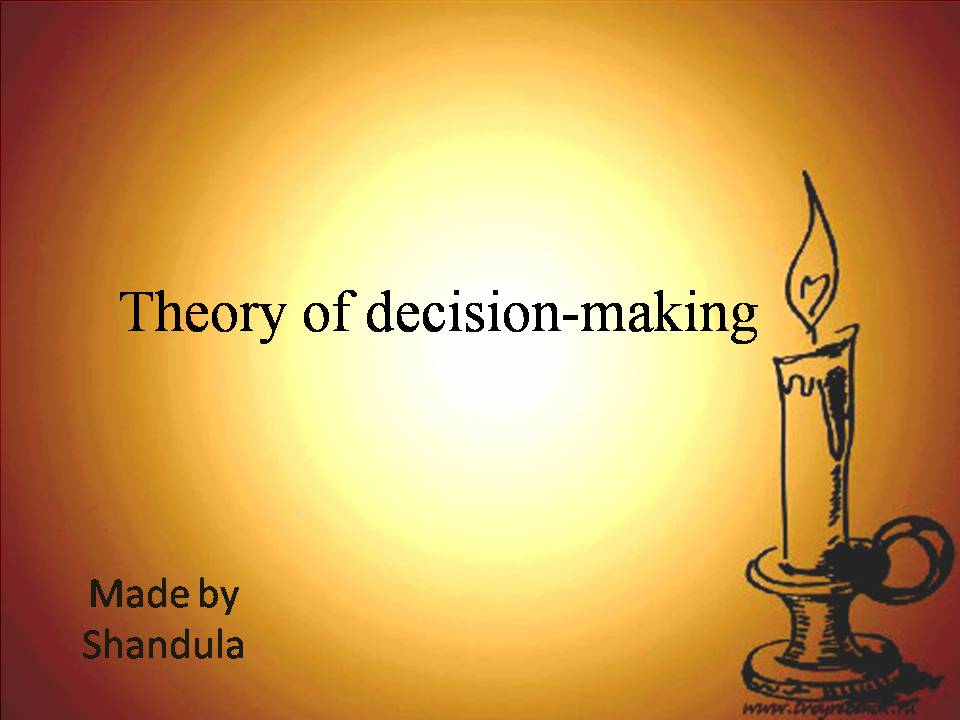
Theory of decision-making
Made by Shandula
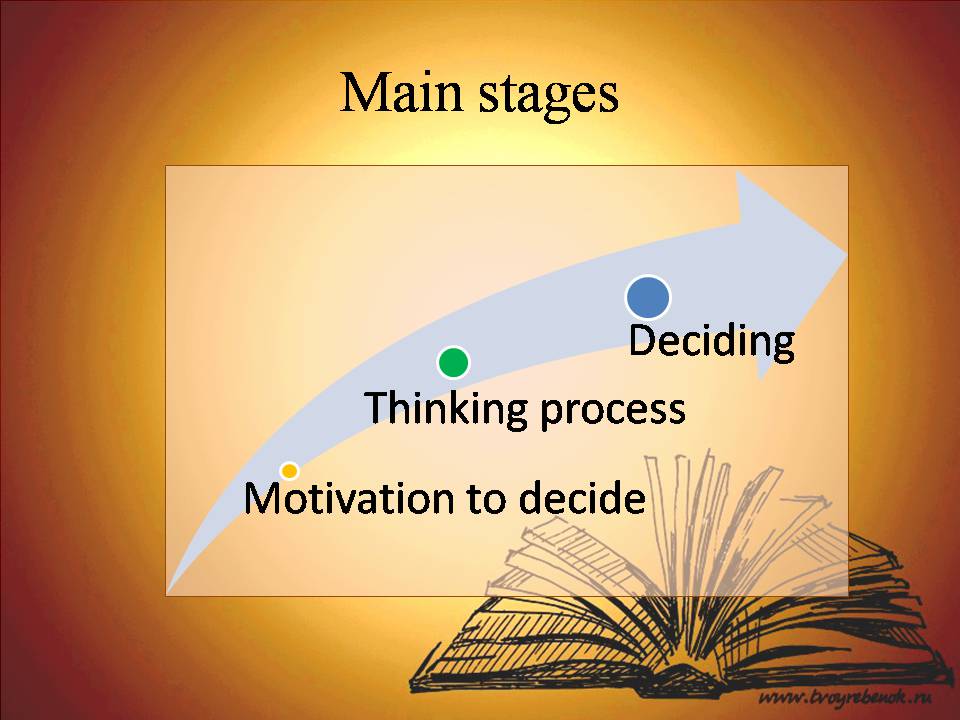
Main stages
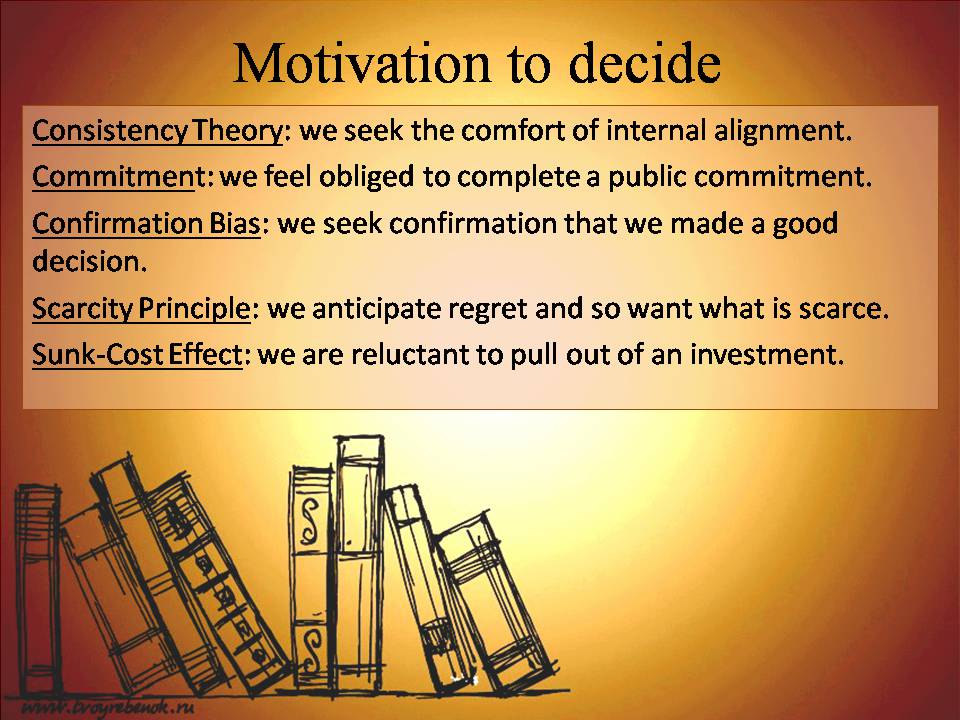
Motivation to decide
Consistency Theory: we seek the comfort of internal alignment.
Commitment: we feel obliged to complete a public commitment.
Confirmation Bias: we seek confirmation that we made a good decision.
Scarcity Principle: we anticipate regret and so want what is scarce.
Sunk-Cost Effect: we are reluctant to pull out of an investment.
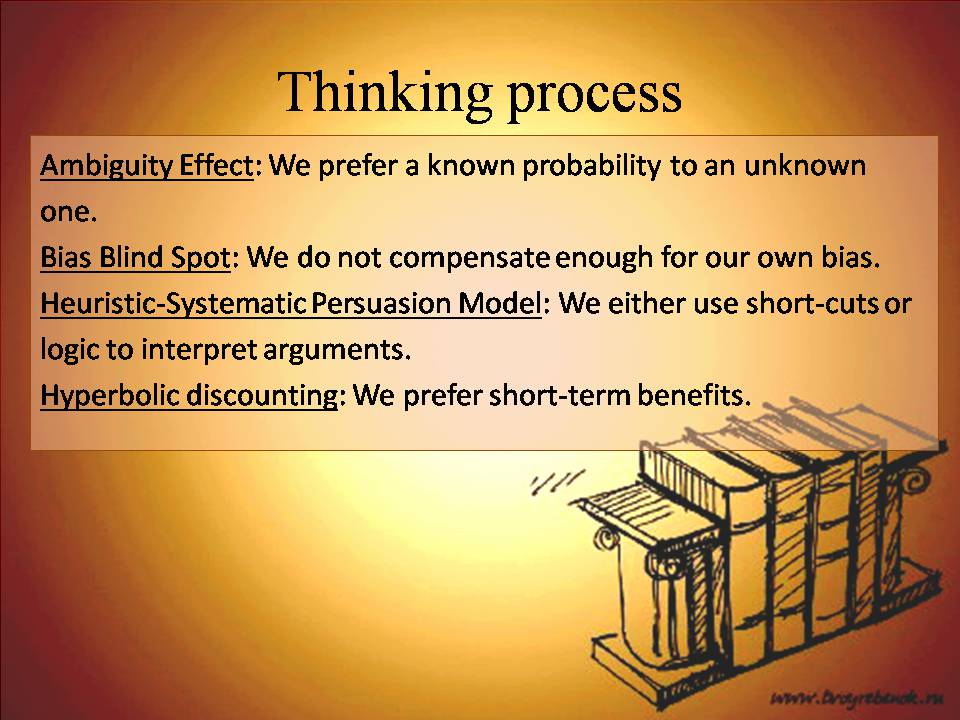
Thinking process
Ambiguity Effect: We prefer a known probability to an unknown one.
Bias Blind Spot: We do not compensate enough for our own bias.
Heuristic-Systematic Persuasion Model: We either use short-cuts or logic to interpret arguments.
Hyperbolic discounting: We prefer short-term benefits.
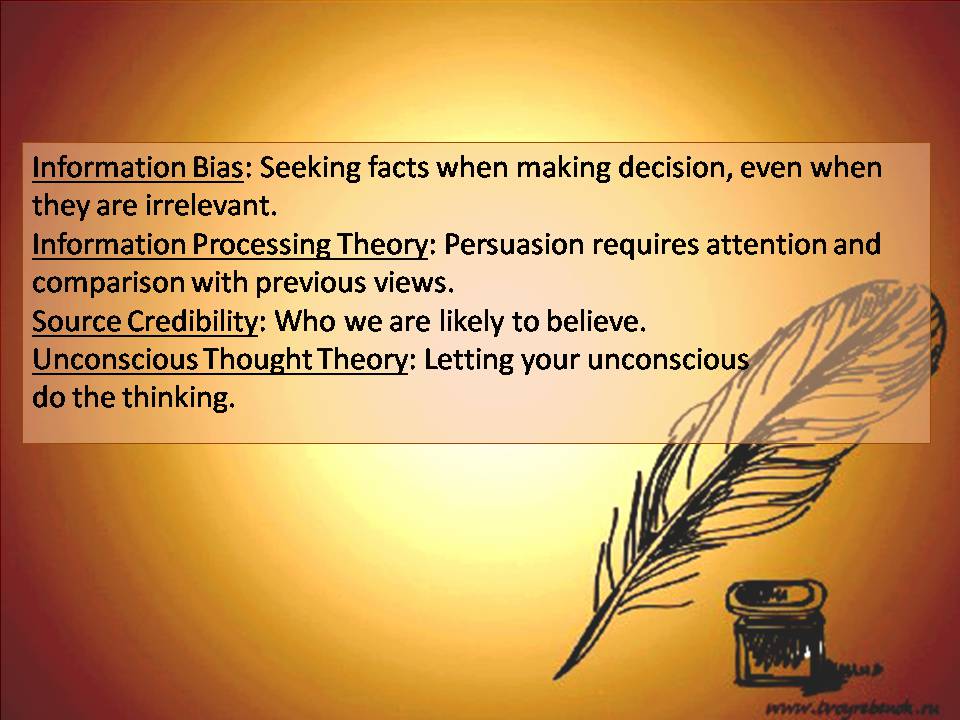
Information Bias: Seeking facts when making decision, even when they are irrelevant.
Information Processing Theory: Persuasion requires attention and comparison with previous views.
Source Credibility: Who we are likely to believe.
Unconscious Thought Theory: Letting your unconscious
do the thinking.
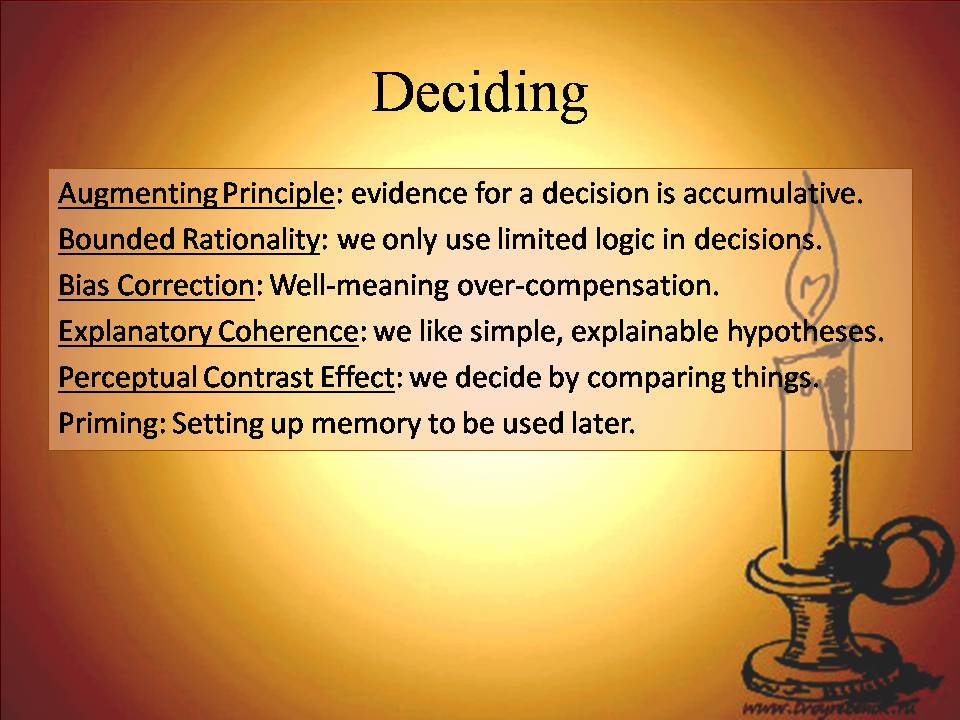
Deciding
Augmenting Principle: evidence for a decision is accumulative.
Bounded Rationality: we only use limited logic in decisions.
Bias Correction: Well-meaning over-compensation.
Explanatory Coherence: we like simple, explainable hypotheses.
Perceptual Contrast Effect: we decide by comparing things.
Priming: Setting up memory to be used later.
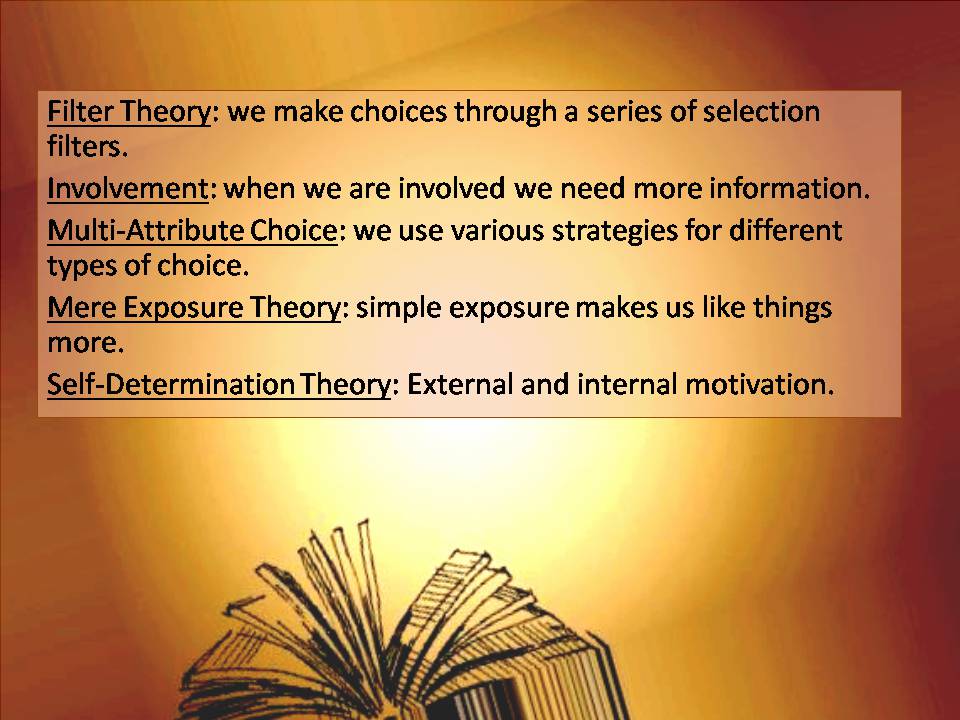
Filter Theory: we make choices through a series of selection filters.
Involvement: when we are involved we need more information.
Multi-Attribute Choice: we use various strategies for different types of choice.
Mere Exposure Theory: simple exposure makes us like things more.
Self-Determination Theory: External and internal motivation.
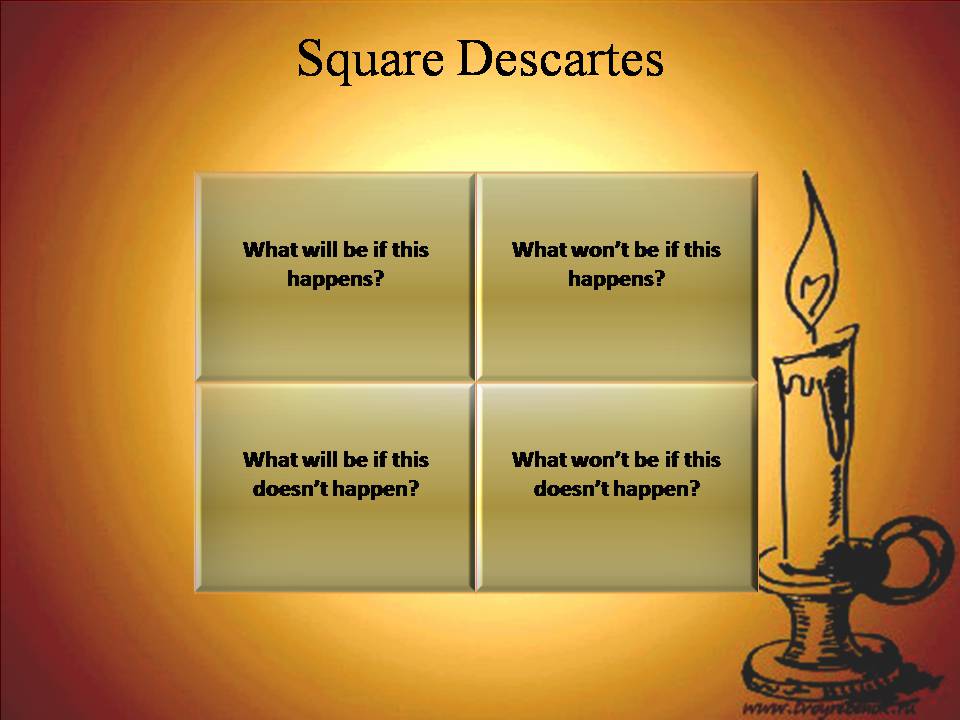
Square Descartes
What will be if this happens?
What won't be if this happens?
What will be if this doesn't happen?
What won't be if this doesn't happen?

Thanks for your attention